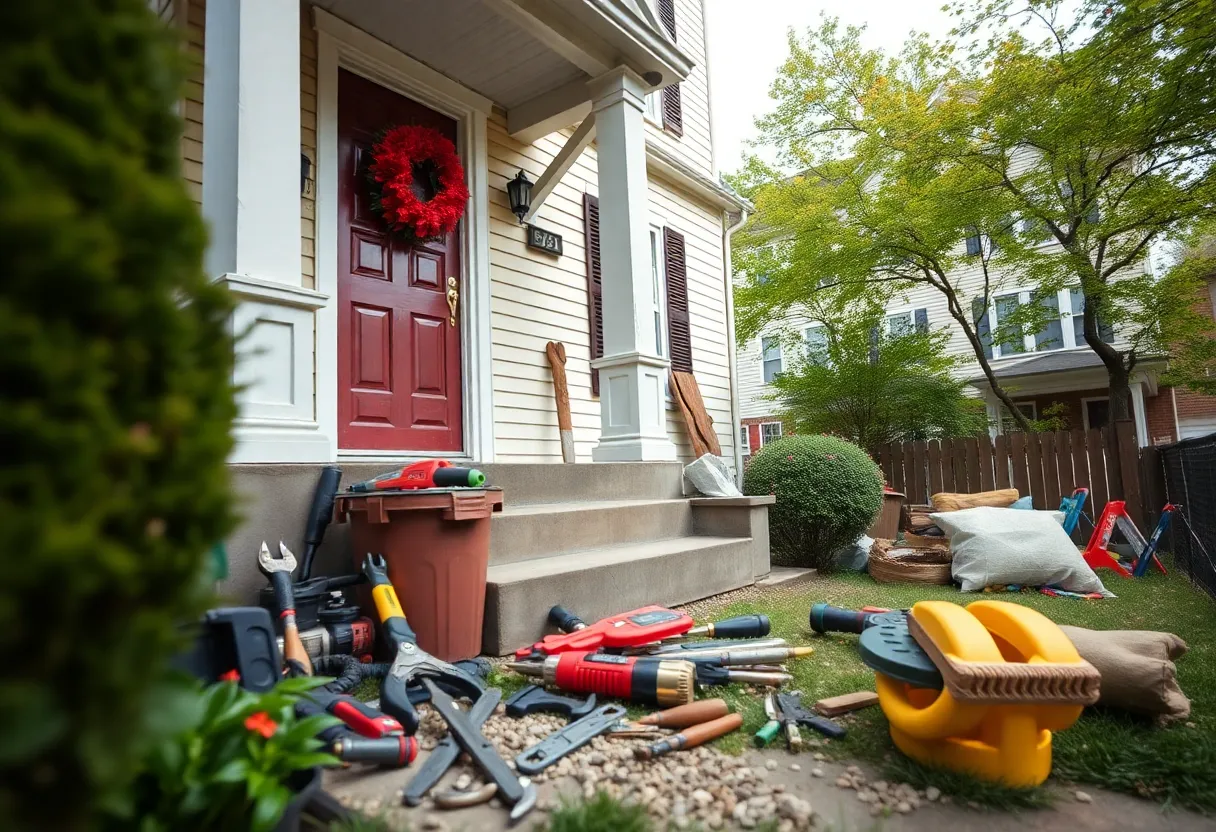What Are the Key Considerations for Creating an Effective Home Repair Plan?
Developing a comprehensive home repair plan is essential for maintaining property value, ensuring safety, and avoiding costly emergencies. An effective plan balances thorough assessment, realistic budgeting, strategic prioritization, and clear execution. This article explores the critical considerations needed to craft a home repair plan that is both practical and sustainable.
Understanding the Scope of Home Repairs
Conducting a Detailed Inspection
The foundation of an effective home repair plan begins with a meticulous inspection. This involves evaluating every part of your property, including the roof, plumbing, electrical systems, foundation, walls, and HVAC units. Use checklists or professional assessments to identify current issues and potential vulnerabilities.
*Accurate assessment provides an honest picture of immediate needs vs. future risks*. This prevents overlooking unseen problems that could escalate if ignored.
Prioritizing Repairs Based on Urgency and Impact
Once the assessment is complete, categorize repairs into levels of urgency:
- Immediate concerns: Structural damage, leaks, or electrical hazards.
- Short-term repairs: Worn-out appliances, aging systems nearing end-of-life.
- Long-term upgrades: Energy efficiency improvements, aesthetic enhancements.
*Prioritization ensures critical issues are addressed promptly, minimizing safety risks and preventing escalation*.
Accurate Budgeting and Cost Estimation
Understanding Repair Costs
Gather detailed quotes from qualified contractors or suppliers. Research typical costs for materials, labor, permits, and miscellaneous expenses. *A precise budget accounts for both anticipated repairs and unexpected contingencies*.
*Incorporate a buffer—generally 10-20%—to accommodate unforeseen expenses during repair execution*. Avoid underestimating costs, as this can derail the entire repair plan.
Setting Financial Priorities
Align repairs with your financial capacity. Distinguish between essential repairs and aspirational projects. Explore financing options like home equity lines of credit or renovation loans for significant upgrades.
Strategic Planning and Scheduling
Developing a Phased Approach
Divide repairs into manageable phases based on urgency and budget availability. Address critical issues first, then schedule less urgent updates subsequently. *A phased plan prevents overwhelming resources and allows for ongoing evaluation*.
Creating a Realistic Timeline
Set specific deadlines for each phase. Account for contractor availability, procurement delays, and weather conditions. Realistic timelines facilitate accountability and prevent project creep.
Engaging Qualified Professionals
Choosing the Right Contractors
Verify credentials, licensing, and insurance. Seek references or reviews. *Partnering with reputable professionals enhances quality control and minimizes risk of substandard repairs*.
Collaboration and Clear Communication
Establish clear expectations, scope of work, and payment terms in writing. Regular updates and site inspections facilitate transparency and timely issue resolution.
Permits, Regulations, and Legal Compliance
Understanding Local Codes and Permits
Research applicable building codes. Obtain necessary permits before commencement. *Compliance mitigates legal risks and ensures repairs are up to standard*.
Documentation and Record Keeping
Maintain detailed records of assessments, permits, inspections, receipts, and warranties. This documentation provides a reference for future repairs or potential resale.
Material Selection and Sustainability
Choosing Quality Materials
Prioritize durable, weather-resistant products suited to your local climate. Investing in quality may have higher upfront costs but reduces long-term maintenance.
Incorporating Sustainable Practices
Opt for eco-friendly materials and energy-efficient systems. Sustainable choices contribute to lower utility bills and environmental impact.
Long-Term Maintenance Planning
Establishing Routine Upkeep
Preventative maintenance avoids emergency repairs. Schedule regular inspections of roofing, gutters, HVAC, plumbing, and electrical systems.
Adjusting the Plan Over Time
Periodically review and update your repair plan based on new issues or changing priorities. Flexibility ensures ongoing property health and value preservation.
Risk Management and Contingency Planning
Identifying Potential Risks
Anticipate weather-related damages, structural shifts, or aging infrastructure. Develop contingency plans for unavoidable delays or cost overruns.
Insurance and Warranties
Ensure your homeowner’s insurance covers major repairs and damages. Warranties on materials and work provide additional security post-repair.
Communication and Stakeholder Engagement
Involving Family or Co-owners
Discuss repair priorities, budgets, and timelines openly. Consensus ensures smoother execution and shared responsibility.
Engaging Community Resources
Leverage local trade associations or homeowner groups for advice, resources, or negotiation leverage.
Technology and Project Management Tools
Utilizing Digital Tools
Use project management apps, budgeting spreadsheets, and reminders to track tasks, costs, and deadlines. Digital solutions enhance organization and accountability.
Monitoring Progress and Quality Control
Regular site visits and progress reviews verify adherence to plans and standards. Address deviations early to prevent rework or delays.
Final Considerations
Flexibility vs. Rigidity
Balance is key. Be prepared to adapt your plan based on emerging issues or new information. *Overly rigid plans risk stagnation; flexibility enhances responsiveness*.
Environmental and Seasonal Factors
Plan repairs considering weather patterns and seasonal variations. Avoid scheduling major exterior work during adverse conditions.
Prioritization for Home Value and Safety
Maintain a focus on repairs that enhance safety and preserve property value. Balance aesthetic upgrades with structural and functional necessities.
*In conclusion, creating an effective home repair plan requires meticulous assessment, strategic prioritization, accurate budgeting, and collaborative execution*. By considering these key factors, homeowners can effectively manage repairs, extend the lifespan of their property, and safeguard their investment.
Author: STAFF HERE BALTIMORE WRITER
The BALTIMORE STAFF WRITER represents the experienced team at HEREBaltimore.com, your go-to source for actionable local news and information in Baltimore, Baltimore County, and beyond. Specializing in "news you can use," we cover essential topics like product reviews for personal and business needs, local business directories, politics, real estate trends, neighborhood insights, and state news affecting the area—with deep expertise drawn from years of dedicated reporting and strong community input, including local press releases and business updates. We deliver top reporting on high-value events such as the Baltimore Book Festival, Preakness Stakes, and Artscape. Our coverage extends to key organizations like the Baltimore Chamber of Commerce and Visit Baltimore, plus leading businesses in shipping and healthcare that power the local economy such as the Port of Baltimore and Johns Hopkins Medicine. As part of the broader HERE network, we provide comprehensive, credible insights into Maryland's dynamic landscape.





